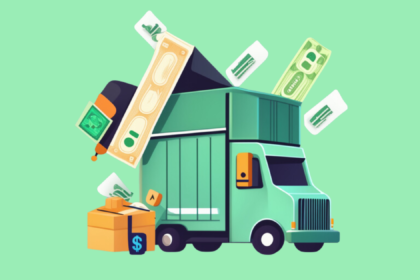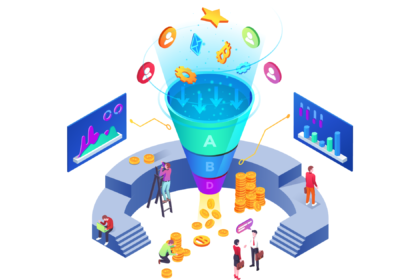Today’s customers are no longer just interested in shopping with you and collecting their orders after simply waiting for them. They expect you to engage with them throughout the order delivery lifecycle via transactional shipping notifications.
However, if you’re anything like most e-commerce businesses, you are unwillingly neglecting the post-purchase, creating a big post-purchase CX gap.
The good news? You can exceed your customers’ expectations and meaningfully engage with them via seamless shipping notifications at every step of the way.
In this article, we’ll break down everything you need to know about shipping notifications, including their key components, types, benefits, best practices, and more.
Key Components of a Shipping Notification
A shipping notification includes various components that help keep the logistics operations running smoothly. Key components include:
1. Shipment Details
One of the most important components of a shipping notification is the shipment information. This includes details like:
- The carrier name
- Tracking number
- Expected delivery date
In some cases, the shipment details may also include the type of transportation being used to deliver the package. This information lets customers track their packages independently without constantly reaching out to your customer support.
2. Seller and Customer Information
A shipping notification includes both your business’s and the customer’s details to avoid any confusion, delays, or wrong deliveries. This includes full names, addresses, and contact numbers.
Say, if a customer wants to reach out to your support team about their delivery, they can easily get the contact details through the notification without having to scramble through your site or app.
3. Product Description
This might seem quite obvious, but a shipment notification also includes what exactly is inside the package. It ensures the customer knows what to expect.
For example, item names, quantities, maybe even SKU numbers or colors if they ordered multiple variants. This provides an added layer of transparency, making it easier for them to cross-check when the package arrives.
4. Handling Instructions
Shipping a product that needs to stay cold? Or one that’s a little more ‘handle with care’ than the rest? Shipping notifications are just the place to highlight these special handling instructions.
They include key instructions like temperature sensitivity, fragile items, or regulated materials, ensuring the customer handles it carefully upon delivery.
5. Packaging Information
Honestly, most customers don’t really think too much about packaging. That is, unless something arrives damaged. Therefore, it’s smart to include details like:
- The number of packages
- Weight
- Dimensions
- Palletization specifications
Types of Shipping Notifications
Shipping a product to a customer involves various steps. First, the item is shipped, then it’s in transit, and finally delivered to the customer. But although this is an ideal scenario, the process isn’t as linear as you’d like it to be. There may be delays, failed deliveries, loss, or damage. And the customer needs to be kept in the loop throughout. Here are 15 types of shipment notifications that account for all of this:
1. Order Shipped
As soon as the order gets shipped out, you can send out an order shipped notification with a realistic estimated delivery date for their delivery (considering all external factors) so that they keep their expectations in check and refrain from blaming you in case the delivery timeline gets extended by a day or two.
Pro tip: This is the most anticipated shipping notification, as this sets up the conversation towards all the other touchpoints of the post-purchase journey. Therefore, you can make sure this is sent as soon as possible in order to ensure the customer that you take the onus of keeping them informed about their order delivery status.
Example:

2. Out for Delivery
Once you send out an order shipped mail, you can follow up with an “out for delivery” notification. The order out for delivery notification can contain a tracking button, which the customer can use to track their orders periodically.
Pro tip: All this time, you might’ve been sending your customer to the carrier’s tracking page, which is good, but it could be better. You can consider adding a ‘tracking button’ or sending them a ‘tracking link’ and making order tracking ‘self-serve’ with your OWN branded order tracking pages.
Example:

3. Order Delivered
When the delivery process goes smoothly and the order is delivered, you can send out a mail where you thank the customer for their order and encourage them to make more purchases in the future.
Pro tip: Make additions to this email in the form of
- Suggesting similar products
- Sharing product care tips and how-to guides
- Adding them to your loyalty program to provide them with rewards and offers
This will make sure that you stay on top of your customers’ minds, and ergo, they choose to be more than just one-time shoppers and spend more with you.
Example

4. Order Delivered with Delays
Just like informing your customers of their order status, you can also send out delivery notifications even when their order is delivered with delays. You must keep in mind that the chances of customers forgiving you are higher when the delay is acknowledged from your end.
Learn more: Shipping Delays: Causes, Impact & How to Minimize Them
Pro tip: Make it better by adding a little apology note along with a discount coupon on their next purchase so that they feel less impacted by the issue and may choose to shop with you once again.
Example:

5. Order in Transit with Delays
While informing the customers about the delay might be enough to mitigate the issue, it doesn’t really offer a solution, especially when the issue is still in effect.
Pro tip: Make use of a solution that helps you proactively identify and resolve these issues before your customer is impacted by them.
You can go a step further and send out replacements via an expedited shipping option so that your customers don’t miss out on an important delivery.
This way, you can:
- Exceed your customers’ expectations
- Show how much you value them, and
- Turn unhappy customers into brand advocates
Example:

6. Failed Delivery
In the case when a delivery attempt is made and yet the order does not reach the customer’s hands, the onus of handling the issue is still on you. Therefore, during such incidents, you can start by communicating with the customer regarding it.
When you have brought forth the issue to the customer, they get a sense of assurance that you might as well handle it and offer a solution.
Protip: You can effectively engage with your customers with shipping notifications up until this touchpoint to keep them on top of their orders (by checking on their availability, etc) – this ensures that you don’t pay extra for delivery.
Example:

7. Delay Predicted
Just like you, when you engage when the order is delivered with delays, you might as well keep the customer informed when there is a possibility of a delay (which might turn out resolved on its own) to stay on the safe side.
This ensures that the customer knows that you are on top of their order and will be less anxious about reaching them on time.
Pro tip: Make use of post-purchase success tools such as LateShipment.com and get predictive alerts for shipments facing delays and resolve them proactively. Even if you are unable to resolve it, just over-communicating with customers when they are facing critical delivery issues would do the trick of easing their anxiety.
Example:

8. Order Suspected Lost
Despite state-of-the-art tracking systems, packages can still end up somewhere other than the required destination. When you suspect a package to be lost, the first thing that you must do is notify your customers at the earliest.
Pro tip: Customers can be under severe stress when their important orders are on the verge of getting lost. Therefore, you can offer multiple solutions to let them know that the issue can be resolved.
While assuring to locate the package, you can also offer a counter solution of refunding the package cost or sending out a free replacement for the same and letting the customer choose for themselves.
Example:

9. Order Lost or Damaged
In case your worry turns out to be true and the package ends up lost in transit/ damaged upon being received, you must prioritize notifying customers at the earliest and try to offer a prompt resolution.
Pro tip: Post notifying, you can provide exceptional customer service to delight your otherwise disappointed customers in the form of:
- Taking full responsibility for the issue
- Bearing the cost of returns and sending out a replacement at your own cost
- Provide discounts or coupons for future orders.
Example:

Similar to the delivery phase, you can also send shipping notifications for select touchpoints in the order returns phase. We’ll take a good look at some of them as well.
10. Order Returned Due to Failed Delivery
When there is a failed delivery attempt, the carrier returns the product to you. You can also use this touchpoint to let the customer know that their order is now in your possession after a failed delivery attempt.
Pro tip: In cases such as this, you can enable your customer support team to acquire accurate information from them, such as the address and the date & time of rescheduling, etc, and effectively follow up with them. This way, you can save on additional shipping costs
Example:

11. Return Request Rejected
A shipment is assigned this status when the reason for the return is invalid or it doesn’t meet all of the conditions required for approval.
Pro tip: Most of the returns are size and fit-related. But there can be cases of fraudulent returns and wardrobing, etc. Therefore, it is wise to include conditions to reduce them in your returns policy.
When the customer requests a return, you can add selective conditions and cross-verify them for inspection. This makes sure that the order return request is indeed valid and saves unnecessary shipping costs.
Example:

12. Return Request Approved
A shipment is assigned this status when the reason for the return is valid and, hence, approved from your end.
Pro tip: The returns approved notification is the ‘order confirmation’ equivalent of the returns shipping notifications. This is because customers who have requested returns are already in the angst of returning their order (which they most expected).
The best thing you can do for them at this stage is to make the returns process as seamless as possible and reduce their frustration.
Example:

13. Return Initiated
A shipment is assigned this status when the customer requests a return on their product, and the process for initiating it starts after getting approved from your end.
Pro tip: Requesting returns via a designated portal might be new for customers. Therefore, you can include information on what they need to do next to be prepared. You can also include options in your shipping notification to exclude label generation if the customer has pre-printed return labels already.
Example:

14. Return in Transit
Similar to delivery, you can also send return status updates on orders that are on their way to your store.
Pro tip: Orders that are returning too can face delays and hindrances while in transit. Therefore, it is wise to offer proactive updates on return requests via shipping notifications and effortlessly keep customers in the loop.
This not only provides transparency around return status but eliminates customer anxiety about the whereabouts of their package
Example:

15. Returns Received
Just like the order getting delivered, returns received are not the end but rather the beginning of another end. Once the order is successfully returned, you can proceed to take the next steps to strengthen your customer relationships.
Pro tip: In times of a successful return, the customer choosing a refund on their order means shelling out dollars out of pocket. During such times, you can promote exchanges or store credit to ensure revenue retention.
Example:

How Can Shipping Notifications Help Your Business?
Shipping notifications are great to keep your customers in the loop. But they also offer several other benefits for your business. Let’s take a closer look at them:
1. Smarter Inventory Management
Shipping notifications serve as a timestamp for when products leave or return to your warehouse. The system logs these events in real-time, giving you a more accurate picture of inventory movement. This prevents the risk of overselling, overstocking, and back orders, ensuring your stock levels are always current.
2. Greater Transparency and Happier Customers
Modern customers expect better visibility into their orders. They want to know when their package is shipped, where it is now, and when it’s going to reach them. Shipping notifications help you provide just that information. They build trust. They reduce uncertainty. And they make customers feel like they’re in control. And you know what that means – happier customers who are more likely to return to you in the future.
3. Fewer WISMO Inquiries
Ask any eCommerce support team what clogs their inboxes, and you’ll hear it loud and clear: ‘Where is my order?’ These messages eat up unnecessary time, preventing your team from resolving actual complex issues. Shipping notifications eliminate this issue. They let customers track their orders independently and in real-time, reducing the burden on your support team.
Best Practices for Sending Shipping Notifications
Shipping notifications may seem straightforward. But to make sure they’re actually effective, you need to keep certain best practices in mind:
1. Send Notifications After Every Major Touchpoint
Order confirmed? Shipment dispatched? Out for delivery? Keep customers in the loop after every major touchpoint. This reduces your WISMO inquiries and keeps them informed if something goes wrong.
2. Include All the Important Details
Don’t just tell customers where their order is. Give them as much information as possible to reduce those WISMO inquiries. This includes the tracking number, carrier name, estimated delivery date, items being shipped, and any special instructions they might need to know.
3. Ask for Customer Feedback
The best way to identify issues or bottlenecks with your process? Hearing them directly from the horse’s mouth. After the delivery is complete, send a short, friendly feedback request asking customers about their shipment tracking experience. Maybe they appreciate the quick delivery. Maybe they had a bad experience with the carrier. This information will help you improve the process and keep customers happy.
4. Let Customers Unsubscribe If They Want
This might feel counterintuitive, but hear us out. Providing customers the option to opt out of shipping notifications or customize the frequency helps build trust. Some customers may prefer getting updates at every touchpoint. Others might just be happy with a simple ‘package has been delivered’ message. By giving them more control over the notifications, you’re respecting their preferences and preventing them from unsubscribing from all your emails altogether.
5. Use Multiple Channels
Don’t just rely on email. Send shipping notifications via multiple channels like SMS, WhatsApp, and app notifications. This ensures customers don’t miss any important updates, regardless of the channel they use. But don’t copy-paste the same message everywhere. Tailor it to the channel.
Common Mistakes to Avoid
Shipping notifications can enhance your customer’s experience and help you streamline processes. But if not done right, even a well-intentioned update can fall flat. Here are some common mistakes that can cause unnecessary hassle and how you can avoid them:
1. Not being proactive about delays
Delays happen. Weather, logistics challenges, stock mismanagement, and other issues are often beyond your control. But what you can control is how you communicate these delays to the customer.
Don’t wait for customers to reach out to you in frustration. Instead, be upfront and proactive. Notify them as soon as there’s a delay and offer an updated ETA. This not only reduces WISMO inquiries but also helps retain the customer’s trust in your brand.
2. Sending Generic, Impersonal Updates
Sure, a generic ‘Your order has shipped’ update gets the job done. But it doesn’t make the customer feel seen. And honestly, customers today expect more personalization from brands.
So, add the customer’s name, mention the specific product they ordered, and tailor the tone to match your brand’s voice. This humanizes your brand, elevating the customer experience.
3. Ignoring Automation
If you’re still sending delivery notifications manually, it might be time to switch things up. Manual processes not only take up unnecessary time but are also prone to errors, delays, and miscommunications.
So, make use of smart automation tools to automate updates based on tracking data, delivery milestones, and more. For example, with tools like LateShipment.com, you can automate the end-to-end post-purchase process, from shipment tracking to returns management, all without lifting a finger.
Conclusion
Shipping notifications not only keep your customers in the loop but also strengthen your brand’s reputation. By being proactive, personalizing updates, and using smart automation, you can ensure a seamless post-purchase experience.
Moreover, post-purchase experience management platforms like LateShipment.com help you further level up your shipping communication without adding extra work to your plate. With LateShipment.com’s two-way integrations, you can send automated delivery and returns-related shipping notifications via email and SMS to reduce your customers’ anxiety.
LateShipment.com’s Delivery Experience Management Software and Returns Experience Management Software seamlessly integrate with shipping carriers and business tools that include Order Management Systems, Email Marketing Tools, Help Desks, and CRM systems.
Book a demo now to see LateShipment.com in action.






